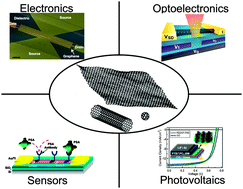In the last three decades, zero-dimensional, one-dimensional, and two-dimensional carbon nanomaterials (i.e., fullerenes, carbon nanotubes, and graphene, respectively) have attracted significant attention from the scientific community due to their unique electronic, optical, thermal, mechanical, and chemical properties. While early work showed that these properties could enable high performance in selected applications, issues surrounding structural inhomogeneity and imprecise assembly have impeded robust and reliable implementation of carbon nanomaterials in widespread technologies. However, with recent advances in synthesis, sorting, and assembly techniques, carbon nanomaterials are experiencing renewed interest as the basis of numerous scalable technologies. Here, we present an extensive review of carbon nanomaterials in electronic, optoelectronic, photovoltaic, and sensing devices with a particular focus on the latest examples based on the highest purity samples. Specific attention is devoted to each class of carbon nanomaterial, thereby allowing comparative analysis of the suitability of fullerenes, carbon nanotubes, and graphene for each application area. In this manner, this article will provide guidance to future application developers and also articulate the remaining research challenges confronting this field.


 Please wait while we load your content...
Please wait while we load your content...